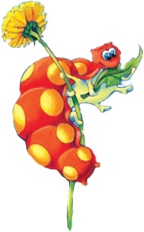A Quick Start for a Strong Finish
Keys to a Strong Finish
A quick start!
Instruction is the best way to rapidly
recover lost skills.
Avoid waiting for the kids to remember.
Valid placement procedures
Appropriate placement is critical to later success. Go to Placement Shortcuts for tips on how to get fall assessments done quickly
(second-year and more adoptions).
The First Two Weeks of School
Instruction, Whole Class
NEW! The authors of Read Well 2 have put together a Sample Lesson Planner for how to get the year started with first and second grade students. The planner begins the year with whole class instruction to give teachers time to teach expectations and assess students for placement.
DOWNLOADS:
Teach with joy! We recommend teaching Units 1 through 4 of Read Well K Whole Class only—before adding Read Well K Small Group. Note: Span units across weekends so you can devote five days of instruction to each Whole Class unit. |
 First Grade: Read Well 1, Units 1 and 2 First Grade: Read Well 1, Units 1 and 2Teach Units 1 and 2 to your whole class while completing Read Well placement testing. If students had Read Well K, this easy start provides a great way for students to celebrate knowledge, learn classroom routines, and share new stories. (If your students come to school with rich literacy backgrounds, begin with Units 6 and 7.) Note: Read Well 1 Units 1 and 2 were designed as Start-Up units for the whole class. |
 Second Grade: Read Well 2, Start-Up Unit Second Grade: Read Well 2, Start-Up UnitBegin the year with the Read Well 2 Start-Up Unit and our favorite character, Miss Tam. Follow the 4- to 6-day lesson plans with your homeroom class while teaching students your classroom routines and assessing students for placement in Read Well. Note: The Read Well 2 Start-Up Unit was developed to get your whole class started. (Supplement this unit with two to four days of your own start-up activities.) |
The First Two Weeks of School
A NOTE ON DIBELS
& READ WELL
Recommendation from DIBELS Next coauthor Ruth Kaminski, Ph.D.
"If you are using a research-based program with a placement test, like Read Well, use that to place students in the curriculum." (personal communication, June 6, 2013; used with permission)
Complete Assessments for Small Group Instruction
- During the first two weeks of school, use assessment teams or assess five students each day in your homeroom class.
- Use the results of Read Well assessments (first-year adoptions) or our recommended Placement Shortcuts for schools (second-year and up adoptions) to determine small group placement.
- Start Read Well Small Group Using the schedule below. Avoid delay. Do not wait until universal screening is complete (e.g.k DIBELS, AIMS web, I-Steep, etc.).
The Third Week of School, Starting Small Groups
Kindergarten
Continue Read Well K Whole Class instruction. Begin Read Well K Small Group instruction at the completion of Read Well K Whole Class, Unit 4 (about Week 5 of school).First Grade
Begin small group instruction by the ninth day of school.Second Grade
Begin small group instruction by the seventh day of school.
FAQ: Why Assess Students Who Were in Read Well Last Year?
That’s a great question.
Strong Kids
Some kids pop over the summer. It isn’t unusual to find kids who completed Read Well K, Unit 17
in kindergarten ready to begin Read Well 1, Unit 30.Wobbly Kids
Some kids need a systematic review to rebuild a foundation that was wobbly in the spring or that has
become wobbly over the summer. Reviews can be done quickly.

